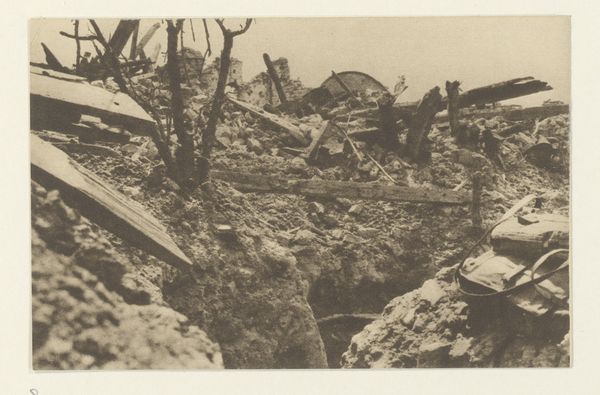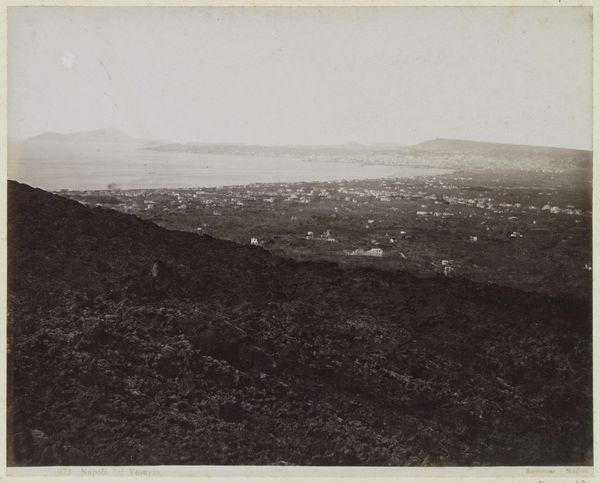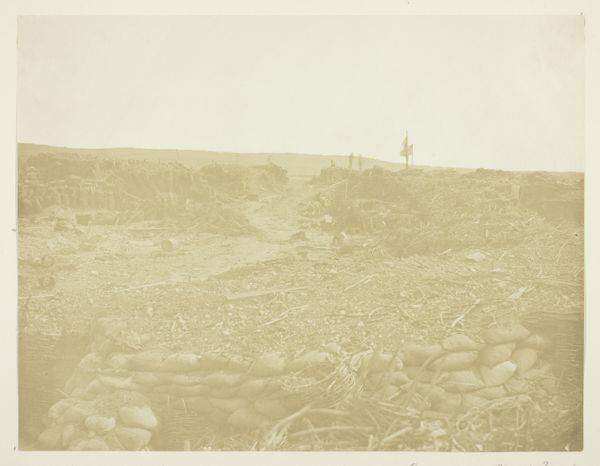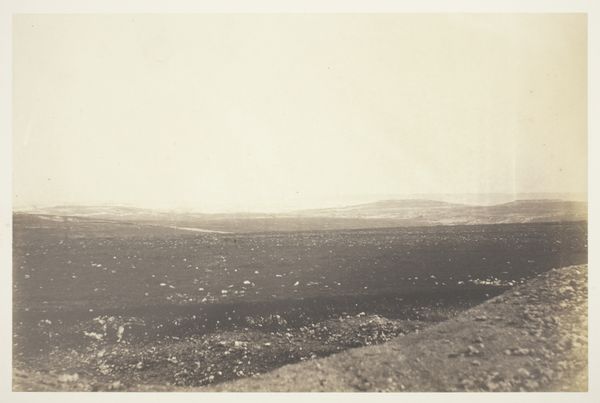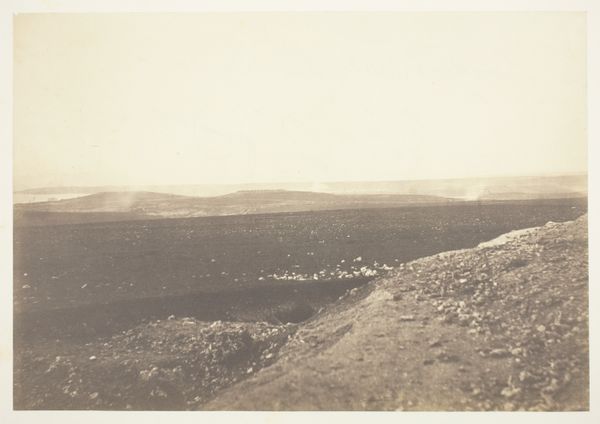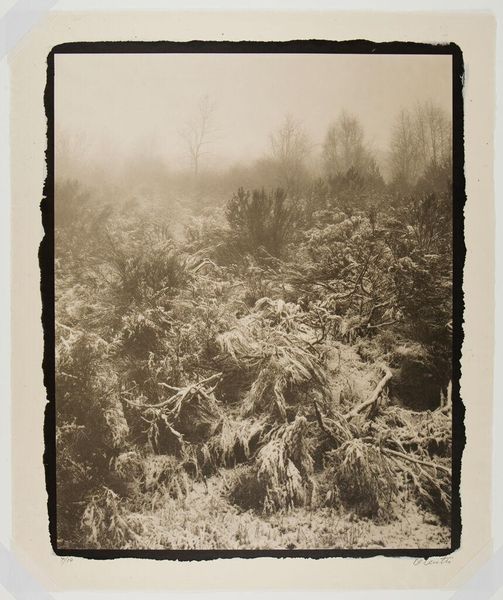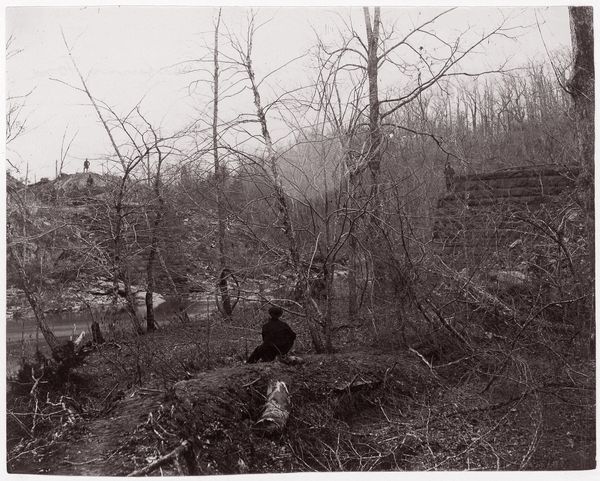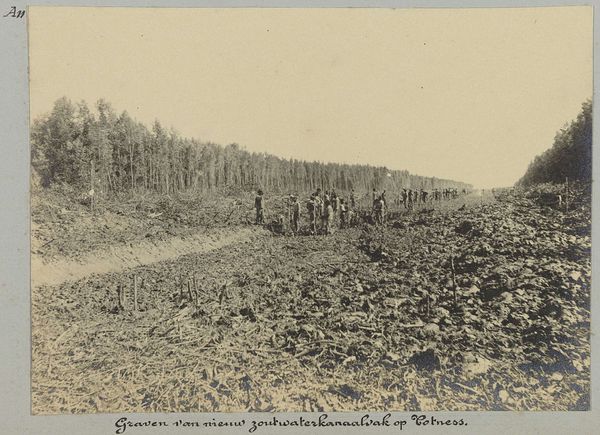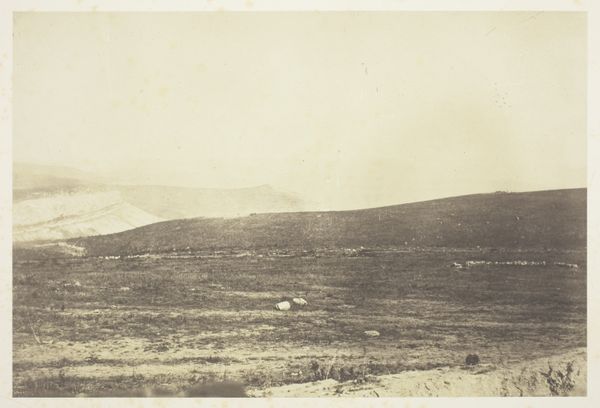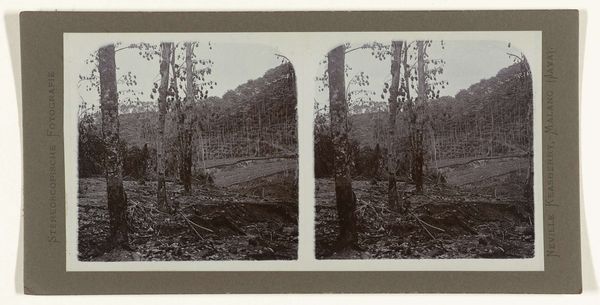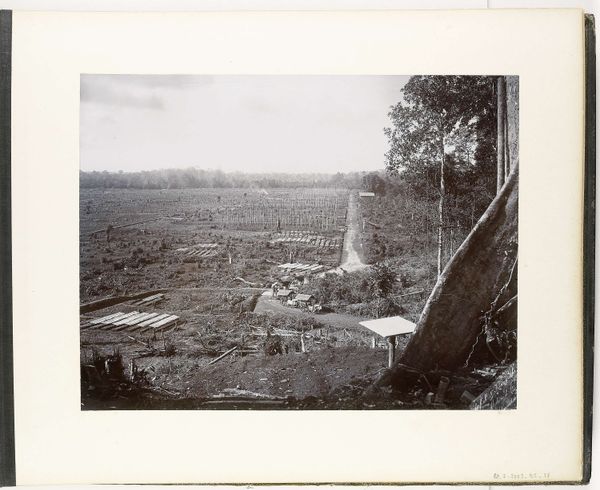
Dimensions: image: 450 x 685 mm support: 540 x 690 mm
Copyright: © Tacita Dean, courtesy Frith Street Gallery, London and Marian Goodman Gallery, New York/Paris | CC-BY-NC-ND 4.0 DEED, Photo: Tate
Editor: Tacita Dean’s “Erinnerung aus dem Weltkrieg," housed at the Tate, casts such a somber mood. It feels like a landscape haunted by memory. What echoes do you hear when you look at this piece? Curator: I hear the rustling of ghosts, don't you? Dean's work often feels like sifting through the remnants of time. The stark landscape, those skeletal trees… they're like the bones of a world ravaged by conflict. It speaks to the enduring power of trauma, doesn't it? Editor: Absolutely, a raw, visceral kind of echo. I am really seeing that now. Thank you. Curator: And thank you for joining me today.
Comments
tate 8 months ago
⋮
http://www.tate.org.uk/art/artworks/dean-erinnerung-aus-dem-weltkrieg-p20249
Join the conversation
Join millions of artists and users on Artera today and experience the ultimate creative platform.
tate 8 months ago
⋮
Erinnerung aus dem Weltkrieg belongs to a portfolio of twenty black and white photogravures with etching collectively entitled The Russian Ending. The portfolio was printed by Niels Borch Jensen, Copenhagen and published by Peter Blum Editions, New York in an edition of thirty-five; Tate’s copy is the fifth of ten artist’s proofs. Each image in the portfolio is derived from a postcard collected by the artist in her visits to European flea markets. Most of the images depict accidents and disasters, both man-made and natural. Superimposed on each image are white handwritten notes in the style of film directions with instructions for lighting, sound and camera movements, suggesting that the each picture is the working note for a film. The title of the series is taken from a convention in the early years of the Danish film industry when each film was produced in two versions, one with a happy ending for the American market, the other with a tragic ending for Russian audiences. Dean’s interventions encourage viewers to formulate narratives leading up to the tragic denouements in the prints, engaging and implicating the audience in the creative process.
